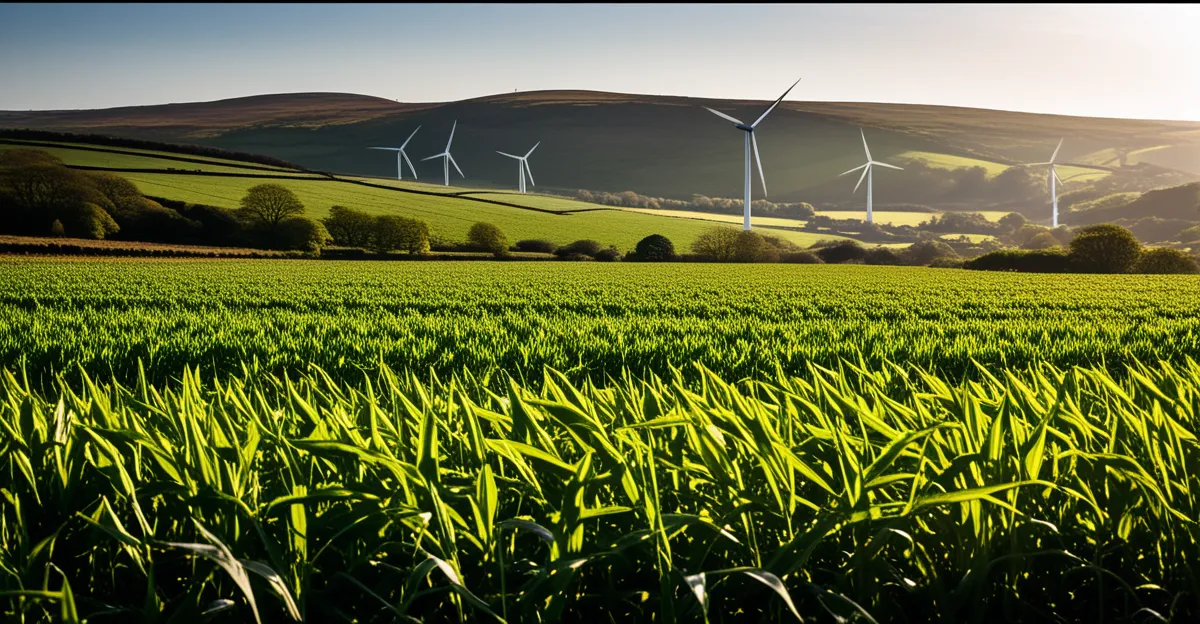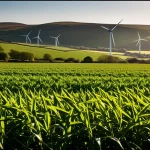Breakthroughs in Offshore Wind Technology
The UK continues to lead global offshore wind advancements with significant progress in turbine innovation and deployment of floating wind farms. Floating wind technology addresses the challenges posed by deep waters where traditional fixed turbines are impractical. These floating wind farms allow for installation in previously inaccessible areas, expanding the UK’s renewable energy potential significantly.
Next-generation turbine designs incorporate larger blades and advanced materials to increase both efficiency and power output. Innovations in blade aerodynamics and lightweight composites contribute to higher energy capture at lower costs. This progress enables offshore wind projects to produce more electricity with fewer turbines, optimizing space and investment.
Also to discover : What are the environmental impacts of the UK tech sector?
New offshore renewable energy projects and strategic partnerships between industry leaders and research institutions are driving rapid expansion. Strong collaboration accelerates the commercialization of cutting-edge technologies, supporting the UK’s ambitious net-zero targets. These ventures also foster local supply chains and create skilled jobs, reinforcing the socio-economic benefits of this clean energy sector.
Together, these breakthroughs ensure the UK’s offshore wind sector remains at the forefront of climate solution technologies, harnessing the power of the sea to provide reliable, sustainable energy for the future.
In parallel : What Are the Challenges Facing UK Tech Companies?
Breakthroughs in Offshore Wind Technology
The deployment of floating wind farms marks a pivotal advance in UK offshore wind technology. Unlike traditional fixed turbines anchored to shallow seabeds, these floating designs enable turbines to be installed in deeper waters, dramatically expanding the scope of viable sites for wind energy capture. This expansion into areas with stronger, more consistent winds increases overall energy yield and stabilizes supply.
Next-generation turbine designs contribute to efficiency gains essential for maximizing output. Larger rotor diameters and longer blades improve kinetic energy absorption from wind at varying speeds. Combined with advanced materials such as lighter composites and enhanced blade aerodynamics, these turbines generate more power per unit while reducing structural loads. This innovation decreases maintenance demands and operational costs, making projects more economically sustainable.
Continuous progress is driven by a growing portfolio of renewable energy projects and strategic partnerships among leading companies and research institutions. These collaborations facilitate rapid technology transfer and accelerate commercialization, enabling the UK to maintain leadership in offshore wind. Joint efforts also stimulate local supply chains and skilled workforce development, strengthening the socio-economic impact beyond energy generation.
Integrating these technological and collaborative advances solidifies the UK’s position at the renewable energy frontier, ensuring offshore wind remains a cornerstone of the nation’s net-zero ambition.
Breakthroughs in Offshore Wind Technology
Advancements in UK offshore wind notably revolve around the deployment of floating wind farms, which are transforming the energy landscape by enabling turbines to be installed in deeper waters. This technology unlocks vast new areas with stronger and more consistent wind conditions, significantly boosting energy capture. Floating wind farms reduce reliance on fixed foundations, lowering environmental impact on marine ecosystems and offering greater site flexibility.
Turbine innovation is at the heart of efficiency improvement. Next-generation designs feature longer blades made from lightweight composites, improving energy yield by capturing more wind power even at lower speeds. Enhanced blade aerodynamics reduce drag and mechanical stress, resulting in fewer maintenance requirements and longer operational life. These innovations increase output per turbine unit, optimizing both capital and operational expenses.
The rapid expansion of offshore wind is driven by a surge in renewable energy projects supported by strategic partnerships. Collaboration between industry leaders and research institutions accelerates technological advancement and deployment speed. These partnerships also cultivate local supply chains, creating skilled jobs and reinforcing the UK’s economic growth in the clean energy sector. Together, these elements synergize to sustain the UK’s leadership in offshore wind power.
Breakthroughs in Offshore Wind Technology
The expansion of floating wind farms is a cornerstone of recent UK offshore wind advancements, unlocking new potential by enabling turbines to be sited in deep waters previously inaccessible to fixed platforms. This strategic shift allows harnessing of stronger and more consistent wind resources, substantially increasing energy generation capacity. Floating structures also reduce seabed disturbance, offering ecological advantages alongside enhanced site flexibility.
Turbine innovation continues to drive efficiency improvements, with next-generation designs featuring longer blades crafted from advanced lightweight materials. These enhancements increase aerodynamic performance, allowing turbines to capture more wind energy across variable conditions. The resultant rise in output per turbine reduces the number of units needed for a given capacity, streamlining project logistics and operational costs.
The rapid growth propelled by renewable energy projects is bolstered by dynamic partnerships among industry leaders and research institutions. Such collaborations accelerate technological advancement and deployment speed, ensuring the UK’s offshore wind sector scales effectively to meet ambitious climate goals. These efforts simultaneously stimulate local supply chains and expertise, reinforcing economic resilience within the renewable energy industry.
Collectively, these developments underscore the transformative impact of floating wind farms, turbine innovation, and active partnerships in shaping the UK’s offshore wind future.
Breakthroughs in Offshore Wind Technology
Emerging floating wind farms are transforming the UK offshore wind advancements by unlocking vast areas in deeper waters where traditional fixed turbines cannot be installed. This expansion taps into stronger, more consistent winds, which substantially increases energy output. The flexible anchoring systems of floating platforms minimize seabed disruption and enable deployment in diverse marine environments, offering a sustainable solution that broadens site options across the UK coastline.
At the heart of these advancements lies significant turbine innovation. Next-generation turbines feature longer, lighter blades constructed with advanced composite materials that enhance aerodynamic efficiency. These turbines capture more wind energy even at lower speeds, increasing total power output per unit. Additionally, improved blade designs reduce mechanical stress, decreasing maintenance needs and boosting turbine reliability over operational lifetimes. Such innovations collectively reduce costs and improve performance, driving the economic viability of offshore wind farms.
The surge in renewable energy projects supports rapid sector growth, fueled by strategic partnerships between industry leaders, technology developers, and research institutions. These collaborations facilitate accelerated technology commercialization, streamline supply chains, and foster workforce skill development. As a result, the UK offshore wind sector not only expands energy capacity but also strengthens local economies and the renewable energy industry, maintaining the UK’s leadership position in clean energy generation.
Breakthroughs in Offshore Wind Technology
The UK offshore wind advancements continue to accelerate through the widespread deployment of floating wind farms, which extend the boundaries of viable wind energy sites into deeper waters with stronger wind resources. These floating installations offer significant flexibility and reduced environmental impact, crucial for expanding renewable energy capacity sustainably. Their ability to be anchored without fixed seabed foundations minimizes disruption, making them ideal for complex marine environments.
Turbine innovation has also been central to improving the efficiency and output of offshore wind farms. Next-generation turbines feature longer blades made with advanced lightweight composite materials, enhancing aerodynamic performance and increasing energy capture even at lower wind speeds. These design improvements reduce mechanical wear and maintenance needs by lowering structural stresses, thus optimizing operational expenditure while maximizing power generation.
The rapid growth of the UK offshore wind sector is supported by a surge in renewable energy projects and robust partnerships between industry leaders and research institutions. These collaborations streamline technology transfer and commercialization, allowing faster deployment of advanced turbines and floating platforms. Furthermore, such projects invigorate local supply chains and create skilled employment, reinforcing economic benefits alongside environmental gains. Together, these breakthroughs position the UK at the forefront of offshore wind innovation and clean energy expansion.



